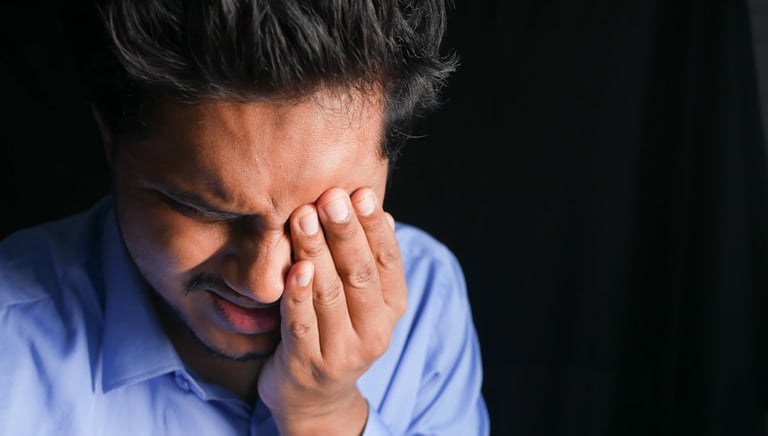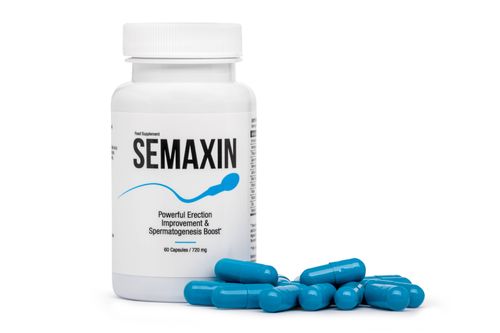

Male Enhancement Supplements
Boost male vitality and performance with natural supplement for enhanced libido and sexual health.
GigantX has been created based on ingredients which improve blood vessel patency, enhance the erection and increase sexual performance.
Regular use of Erisil Plus capsules helps to maintain good sexual relations, supports the proper functioning of the prostate and helps to maintain correct reproductive functions.
Regular use of Expansil Cream allows you to increase the length and thickness of the penis, and also increases endurance during intercourse.
Eron Plus is a brilliant solution for men who are dissatisfied with their sexual performance and want to get even more pleasure in bed.
Semaxin supports the spermatogensis proccess (sperm production), improves the quality of the sperm and increases its volume, increases the libido and also eliminates erection problems in a natural manner, safe for the body.
Member XXL is a food supplement whose effectiveness is based on high-quality ingredients, including: l-arginine, fenugreek extract, palmetto extract, tribulus terrestris extract, Chinese magnolia fruit, Korean panax ginseng, saffron and black pepper.
Symptoms and Diagnosis of Premature Ejaculation in Males
Premature ejaculation (PE) is a common sexual dysfunction that affects men worldwide, yet it is often misunderstood or underreported due to the stigma associated with discussing sexual health. Understanding the symptoms and how PE is diagnosed is crucial for those seeking effective treatment and improved sexual well-being.
Symptoms of Premature Ejaculation
Premature ejaculation typically manifests in several ways, and the symptoms can vary in intensity and frequency. Key symptoms include:
Involuntary Ejaculation:
The most defining symptom is the inability to delay ejaculation for more than a minute or two after penetration, or even before penetration in some cases. This happens despite a strong desire to prolong sexual activity.
Lack of Control Over Ejaculation:
Men with PE often feel a lack of control over when they ejaculate, leading to distress and frustration. This sense of helplessness can contribute to anxiety, making the condition even more challenging.
Reduced Sexual Satisfaction:
Both the affected individual and their partner may experience diminished sexual satisfaction due to the abruptness of the sexual encounter. This can strain relationships and lead to avoidance of intimacy.
Emotional and Psychological Impact:
Men with PE may suffer from feelings of embarrassment, guilt, or inadequacy, which can contribute to performance anxiety and further exacerbate the condition. This emotional toll can affect overall mental health and self-esteem.
Impact on Relationships:
Persistent premature ejaculation can lead to relationship difficulties, as it may cause frustration or disappointment for both partners. Open communication is often hindered by the sensitivity of the issue.
Diagnosis of Premature Ejaculation
Diagnosing premature ejaculation involves a thorough evaluation by a healthcare professional, typically a urologist or a sex therapist. The process may include the following steps:
Detailed Medical History:
The first step in diagnosing PE is obtaining a comprehensive medical history. The doctor will ask about the onset and duration of the symptoms, frequency of premature ejaculation, and the circumstances under which it occurs. They may also inquire about any underlying health conditions, medications, and sexual habits.
Physical Examination:
A physical examination may be conducted to rule out any underlying medical conditions that could contribute to PE. This examination may include checking for signs of hormonal imbalances, prostate issues, or neurological conditions.
Psychological Assessment:
Since psychological factors like stress, anxiety, and relationship problems often play a significant role in PE, a psychological assessment may be recommended. The healthcare provider may ask about mental health history, including any signs of depression or anxiety disorders, as these can influence sexual function.
Partner Interaction Evaluation:
Understanding the dynamics between partners can be crucial in diagnosing and treating PE. The doctor may explore communication patterns, sexual expectations, and relationship satisfaction to identify contributing factors.
Questionnaires and Self-Reports:
Structured questionnaires like the Premature Ejaculation Diagnostic Tool (PEDT) may be used to assess the severity of symptoms and their impact on quality of life. These tools help quantify the extent of the condition and guide treatment planning.
Exclusion of Other Conditions:
The diagnosis of PE often involves ruling out other sexual dysfunctions, such as erectile dysfunction (ED). Sometimes, men with ED may experience PE as a secondary issue, complicating the treatment approach.
Importance of Early Diagnosis
Early diagnosis of premature ejaculation is vital for effective treatment. Many men delay seeking help due to embarrassment, but understanding that PE is a common and treatable condition can encourage timely intervention. A proper diagnosis not only alleviates symptoms but also helps prevent the emotional and relational strain associated with untreated PE.
By addressing the symptoms and getting a clear diagnosis, men can take the first step toward regaining control over their sexual health and enhancing their overall quality of life.
Causes of Premature Ejaculation: Unraveling the Complex Factors
Premature ejaculation (PE) is a common condition, yet its causes are often complex and multifaceted. Understanding these causes is crucial for effectively addressing and managing the condition. The origins of PE can be broadly categorized into psychological, biological, and lifestyle factors, each contributing in varying degrees depending on the individual.
Psychological Factors
Anxiety and Stress:
Anxiety, whether related to sexual performance or other life stresses, is one of the most significant psychological contributors to premature ejaculation. Men who are overly concerned about their sexual performance may find themselves caught in a cycle of anxiety that exacerbates the problem. This anxiety often leads to a heightened state of arousal, making it difficult to control ejaculation.
Early Sexual Experiences:
Men who had rushed or guilt-ridden sexual experiences during their formative years might develop patterns of quick ejaculation. These early experiences can create deep-seated habits and expectations that persist into adulthood, influencing sexual performance and control.
Relationship Issues:
Problems within a relationship, such as unresolved conflicts, lack of communication, or dissatisfaction, can contribute to PE. The emotional strain from these issues can manifest as premature ejaculation, creating a vicious cycle that further strains the relationship.
Performance Pressure:
Societal and self-imposed pressures to perform well sexually can lead to performance anxiety. This pressure often results in a heightened state of arousal and a lack of control over ejaculation, particularly in new or less secure relationships.
Biological Factors
Hormonal Imbalances:
Imbalances in certain hormones, such as serotonin, prolactin, or testosterone, can contribute to premature ejaculation. Serotonin, a neurotransmitter, plays a key role in regulating mood and sexual function. Low levels of serotonin, in particular, are linked to reduced ejaculatory control.
Neurotransmitter Abnormalities:
Abnormal levels of neurotransmitters, which are chemicals in the brain that transmit signals, can affect the timing of ejaculation. Low serotonin levels, for instance, are associated with faster ejaculation, while higher levels are linked to prolonged ejaculation.
Genetic Predisposition:
Some research suggests that premature ejaculation may have a genetic component. Men with a family history of PE are more likely to experience it themselves, indicating that genetic factors might play a role in the condition.
Medical Conditions:
Certain medical conditions, such as prostatitis (inflammation of the prostate) or erectile dysfunction (ED), can lead to premature ejaculation. In cases of ED, the anxiety of maintaining an erection may cause men to rush through sexual activity, leading to quicker ejaculation.
Sensitivity of the Penis:
Some men have a naturally high sensitivity in the glans (the head of the penis), which can cause them to ejaculate more quickly during sexual activity. This heightened sensitivity can be a biological factor contributing to PE.
Lifestyle Factors
Substance Use:
The use of certain substances, including alcohol, drugs, and even certain medications, can influence sexual performance and ejaculation timing. While alcohol may initially lower inhibitions, excessive use can interfere with sexual function and control, leading to PE.
Lack of Sexual Experience:
Men with less sexual experience might find it more difficult to control ejaculation, especially in new or highly arousing situations. This lack of experience can result in premature ejaculation as they are not yet accustomed to managing their arousal levels.
Masturbation Habits:
Some men develop a habit of rapid masturbation, often due to privacy concerns or a desire to climax quickly. This habit can translate into quicker ejaculation during sexual encounters, as the body becomes conditioned to ejaculate quickly.
Physical Inactivity and Poor Health:
A sedentary lifestyle and poor overall health can negatively impact sexual function. Lack of physical fitness, poor diet, and inadequate sleep can contribute to a range of sexual health issues, including premature ejaculation.
The Interplay of Factors
It's important to recognize that the causes of premature ejaculation are often interrelated. For example, a man might experience PE due to a combination of psychological stress, biological sensitivity, and lifestyle habits. Addressing PE effectively often requires a holistic approach that considers all potential contributing factors.
Understanding these causes can empower men to take proactive steps toward managing and overcoming premature ejaculation. Whether through behavioral techniques, medical treatments, or lifestyle changes, addressing the root causes is key to improving sexual health and overall well-being.
Prevalence and Contributing Factors to Premature Ejaculation Beyond Common Causes
Premature ejaculation (PE) is one of the most common sexual disorders in men, affecting a significant portion of the male population across different age groups and demographics. Understanding the prevalence and additional contributing factors—beyond the psychological, biological, and lifestyle causes already discussed—can offer a broader perspective on the condition and its impact.
Prevalence of Premature Ejaculation
Global Statistics:
Research indicates that approximately 20% to 30% of men worldwide experience premature ejaculation at some point in their lives. This makes PE the most common male sexual dysfunction, even more prevalent than erectile dysfunction. However, prevalence rates can vary depending on the population studied, the definition of PE used, and the methods of data collection.
Age-Related Trends:
Premature ejaculation can affect men of all ages, but it is often more common in younger men. This might be due to a lack of sexual experience or heightened anxiety during early sexual encounters. However, older men are not immune to PE, as it can also develop later in life due to age-related changes, such as reduced erectile function or decreased sexual activity.
Cultural and Geographical Variations:
The prevalence of PE can vary significantly across different cultures and regions. In some cultures, where open discussions about sexual health are less common, men may be less likely to report issues with premature ejaculation, leading to underreporting. In contrast, in regions with greater sexual health awareness, prevalence rates might appear higher due to more frequent reporting and diagnosis.
Impact on Relationships and Quality of Life:
PE can have a profound impact on a man's quality of life and his relationships. Studies have shown that men with PE are more likely to experience sexual dissatisfaction, decreased self-esteem, and relationship difficulties. Partners of men with PE may also experience frustration and dissatisfaction, which can strain the relationship and lead to further complications.
Contributing Factors Beyond Common Causes
While psychological, biological, and lifestyle factors are primary contributors to premature ejaculation, other factors can also play a role. These factors are often less discussed but can be just as influential.
Frequency of Sexual Activity:
The frequency of sexual activity can influence the likelihood of premature ejaculation. Men who engage in sexual activity infrequently may experience heightened arousal and excitement during intercourse, leading to quicker ejaculation. Conversely, regular sexual activity may help some men develop better ejaculatory control over time.
Type of Sexual Encounter:
The nature of the sexual encounter itself can be a contributing factor. For instance, men may be more likely to experience PE during new or highly anticipated sexual encounters due to increased arousal or nervousness. The presence of a new partner or engaging in sex in an unfamiliar setting can also contribute to a lack of control over ejaculation.
Sexual Communication:
Poor communication between partners about sexual preferences, desires, and concerns can exacerbate PE. Men who feel unable to discuss their sexual needs openly may experience heightened anxiety during sex, which can lead to premature ejaculation. On the other hand, open and honest communication can help reduce anxiety and improve sexual satisfaction.
Partner’s Sexual Function:
A partner's sexual function can indirectly influence PE. For example, if a partner has a longer arousal period or difficulty reaching orgasm, the man may feel pressured to perform, leading to premature ejaculation. Additionally, if a partner experiences sexual dysfunction, it may heighten the man's anxiety, contributing to PE.
Societal Expectations and Masculinity:
Societal expectations about masculinity and sexual performance can create pressure on men to meet certain standards, such as lasting longer during intercourse. These unrealistic expectations can lead to performance anxiety and contribute to premature ejaculation. Men who internalize these societal norms may be more likely to experience stress and pressure during sexual activity, resulting in PE.
Previous Negative Sexual Experiences:
Men who have had negative sexual experiences in the past, such as sexual trauma, ridicule, or embarrassment, may develop a conditioned response that leads to premature ejaculation. These experiences can create a psychological barrier to achieving ejaculatory control, as the individual may unconsciously associate sex with fear, anxiety, or a need to rush.
Health-Related Factors:
General health and wellness can impact sexual function and, by extension, premature ejaculation. Chronic health conditions such as diabetes, cardiovascular disease, or obesity can affect overall sexual health, making men more susceptible to PE. Additionally, conditions that cause chronic pain or discomfort may lead to hurried sexual activity and quicker ejaculation.
Impact of Media and Pornography:
Exposure to unrealistic portrayals of sex in media and pornography can skew perceptions of normal sexual performance. Men who compare themselves to these idealized depictions may develop unrealistic expectations for their sexual performance, leading to anxiety and premature ejaculation. The pressure to emulate what is seen in media can lead to a hurried approach to sex, contributing to PE.
The Importance of a Comprehensive Approach
Addressing premature ejaculation effectively requires a comprehensive understanding of all potential contributing factors. By recognizing the broader context in which PE occurs—including cultural, relational, and societal influences—men can seek more tailored and effective treatments. Health professionals can also use this knowledge to offer holistic care that addresses not only the symptoms of PE but also the underlying factors that contribute to it.
In conclusion, while the primary causes of premature ejaculation are well-documented, the prevalence and additional contributing factors highlight the complexity of this condition. Understanding these nuances can empower men to take control of their sexual health and improve their quality of life.










